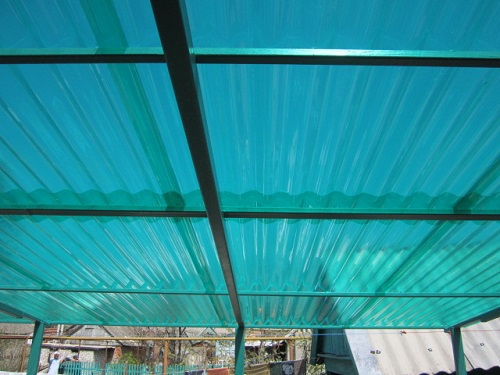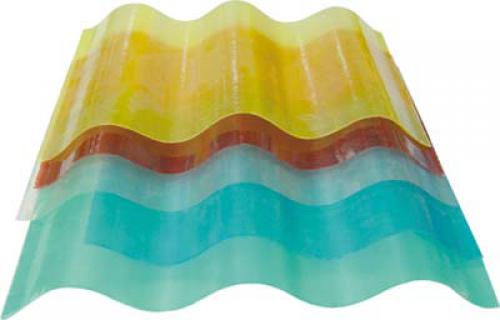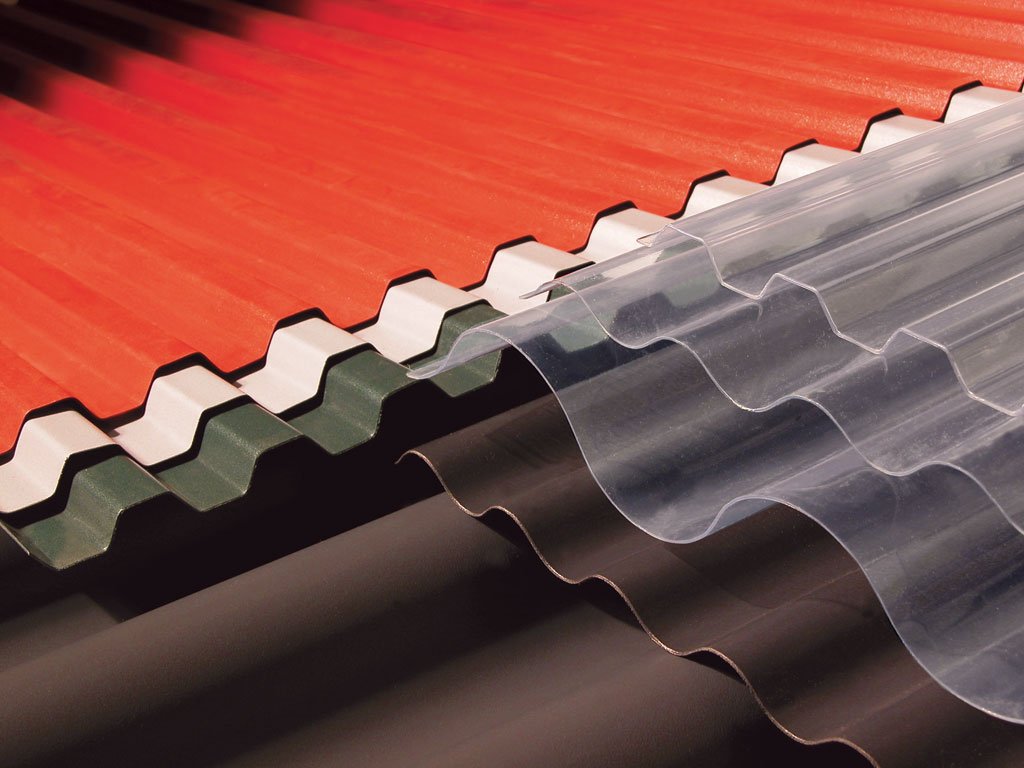
Using modern roofing materials, installation can be greatly facilitated and completely new design projects can be created. Such material may be a transparent slate for a light-transmitting roof device.
If you want to build an unusual gazebo or equip a winter garden in the house, then the transparent PVC slate will be the best solution for the installation of the roof. This material is produced in a wide range of colors, so choosing the right shade for the exterior will not be difficult at all. Colored slate reviews about which are sometimes mixed, is suitable for creating an individual design. For example, if you want to build a gazebo, then it is better to choose a slate of blue or blue color, since in hot weather the color of the roof will give a feeling of coolness. If, on the contrary, you want to fill the room with sunlight, then you should choose a colored slate in orange tones.
Content
Advantages of polymer slate
It should be noted that a transparent slate differs from the usual one in almost everything; they are only related by the name and shape of the sheets. Strongly distinguish these properties and properties.
Transparent slate is very light-transmitting, but at the same time it is a reliable hermetic coating that protects the house from low temperatures, rainfall, wind and bad weather. The material has good ductility, with it you can easily create domes, arches, and other complex shapes.
Advantages of transparent slate are:
- elasticity;
- flexibility;
- profitability. Allows you to mount sheets with an overlap, bend them without using special mounting systems;
- high strength. Withstands high wind and snow loads, without collapsing under the influence of hail;
- ease and speed of installation;
- resistance to ultraviolet. Does not pass harmful solar radiation, does not fade under the influence of UV and does not change its technical characteristics;
- light weight;
- resistance to weathering;
- surface smoothness;
- low flammability;
- appearance;
- good soundproofing properties;
- high light transmission. Without the use of additional devices allows you to illuminate the room during daylight hours, thereby reducing lighting costs;
- security. In case of fire, it does not support the combustion process and does not form drops.
It should be noted that the polymeric material is somewhat susceptible to expansion under the influence of temperature changes. This property makes it impossible for the material to interact with the supporting structures.
In addition to the above advantages, the material also has disadvantages. So, this roofing material has a small operating temperature range, which varies from -20 ° C to + 50 ° C.

The high margin of safety in bending makes it possible to use transparent slate for the implementation of figured structures. In addition, the material is resistant to aging, and therefore its acquisition will be a profitable investment. Its durability is facilitated by co-extrusion and bi-orientation.
Where is transparent slate used?
The scope of the material is quite wide, it is used:
- for roofing in the construction of public, residential, commercial and agricultural buildings;
- as arched structures. For example, when breeding hangars, warehouses or similar structures;
- for the manufacture of extensions, hedges, arbors and sheds;
- for the construction of greenhouses and greenhouses;
- for the manufacture of canopies over sports facilities, summer cafes, places for recreation;
- for the device of internal elements of an interior. For example, flat transparent slate is used for the construction of light lamps or internal partitions;
- for covering roofs and walls of indoor pools, stopping pavilions and parking lots.

You cannot walk on sheets of transparent slate, and therefore, boards are laid to move.
Other varieties of polymer slate

Another type of polymer material is fiberglass slate. This roofing material is made from fiberglass reinforced polymer. This gives a heat-resistant material that is successfully used at temperatures from -40 ° C to + 140 ° C. The material is reliable and durable, and therefore fiberglass slate is recommended for multipurpose use.
This roofing material can withstand even a strong hail with the wind. Dents that form on its surface and even cobweb-like cracks do not reduce its protective properties. At the moment, a rather popular novelty in the market of roofing materials is polymer-coated slate. It is based on classic asbestos-cement sheets coated on both sides with a polymer. As a result, the roofing has all the advantages of ordinary slate, but it is devoid of such disadvantages as fragility and warping due to water. Polymerized slate is more durable and stronger than usual, and besides it does not require painting and has good decorative properties.
The determining factor for the low cost of transparent slate is the low cost of the feedstock, which are polymer granules. Due to the high competition between manufacturers of raw materials, the cost of granules is low, which in turn affects the cost of the final product. The absence of toxic heavy metals and harmful plasticizers make slate safe for human health.
Plastic transparent slate is produced by extrusion. In the installation, granules are heated and melted, turning into molten plastic, which is drawn through a forming slit (extruder). During the broach, the plastic cools and gains the necessary strength, and the extruder sets the shape and width of the sheet. The length of the sheet is determined by trimming at the end of the production line.

Sheets of transparent slate should be stored and transported on a flat horizontal surface. In this case, direct exposure to sunlight and moisture should be excluded. The height of the stack of sheets during storage should not be more than 50 cm.





Alas, no comments yet. Be the first!